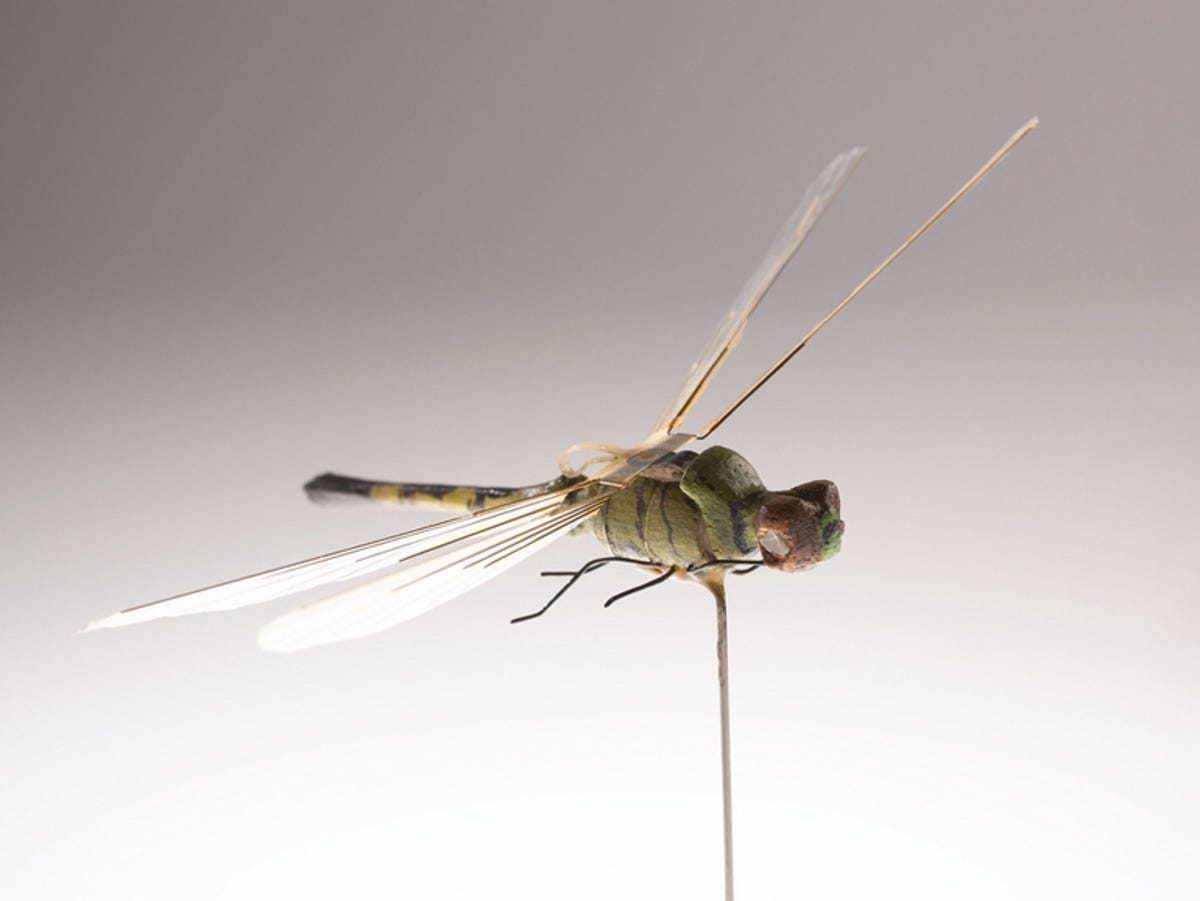
The Dragonfly Insectothopter
Before Festo developed its realistic flight dragonfly robot in the last couple of years, the CIA was across that business in the '70s. The Dragonfly Insectothopter, developed by the agency's R&D department, wasn't designed to resemble a dragonfly for flight purposes, but for espionage. The miniature unmanned aerial vehicle was a proof-of-concept for intelligence collection, and had a small engine to flap the wings and a vent in the rear for added thrust. It flew well in tests, but was never deployed -- once any sort of crosswind entered the picture, the Insectothopter was useless. Here it is in action.
Project Acoustic Kitty
Animals were explored pretty thoroughly as an espionage option by the CIA. One such was Acoustic Kitty, and it's pretty much exactly what it sounds like: a cat was implanted with a battery and microphone, with an antenna in its tail; the idea was that the cat would wander about merrily doing cat things, and the microphone would pick up audio and transmit it to the CIA. Its first mission was to eavesdrop on two men in a park near the Soviet compound; upon release, it tried to cross the road and was killed by a passing taxi. The estimated cost of the project was around $25 million.
Pigeon Camera
The Pigeon Camera was a little more successful. Looking like a little reverse backpack to be worn by pigeons, it meant the CIA could get better pictures than those taken by planes, since pigeons fly significantly lower. The camera would be activated or set to start after a delay, then a homing pigeon released to fly over a particular target with it running, taking still images at set intervals. Because pigeons are so common, it was easy for the spy birds to fly by undetected. What exactly they photographed, however, is unknown -- those images are still classified.
Belly Buster
This 1950s-1960s era kit is everything you need to install covert listening devices: a hand-cranked drill, wire and microphones, all packed into a slender envelope designed for ease of concealment. The drill would be used to drill a hole, say, in a masonry wall. Holding the base of the drill against their stomach, the agent would manually turn the drill to create a hole, into which would be fed the microphones and wires. Because this was a painfully unpleasant experience, the drill was nicknamed the "Belly Buster".
Covert Compact
Ladies could be spies too. In fact, they were sometimes more effective at it, partially because in the '50s and '60s, no one really expected ladies to be good at much beyond taking shorthand and keeping house. At any rate, the CIA had a range of gadgets for the lady spy, including this modified face-powder compact. Into the mirror are engraved codes, created for the purpose of brevity or security; in this case, it's a series of code words and numbers. Only when the mirror is tilted at the correct angle are the codes revealed.
Secret compartment silver dollar
Silver dollars never really took off in the states as currency -- but they're pretty popular as personal lucky charms and collectors' items, and even today people still carry them in their pockets. They are, therefore, pretty perfect for covert operations; after all, no one would think twice about a person with a coin. This hollow Eisenhower silver dollar from the '70s was used to secretly send messages or film.
Letter removal device
Now this is clever. We've all heard the trick about resealing an envelope with steam, but CIA operatives didn't have to mess about with such crude options. Instead, the two thin long pincer arms of this device were inserted into the gap where the seal didn't reach to the corner of the envelope, and the letter wound around them into a tight scroll. It could then be extracted, read and returned to the envelope -- all without tampering with the envelope itself.
Charlie
This is Charlie. Unlike the dragonfly UAV, unmanned underwater vehicle (UUV) Charlie was a little more successful. Rather than espionage per se -- after all, there's not a lot of talking going on under water -- the robotic fish was designed to study the kind of technology that would be required for an underwater robot. Charlie was build for speed, durability, manoeuvrability, depth control, navigational accuracy and autonomy, and in his 61cm body he contained a ballast system, propulsion in the tail and communications for wireless line-of-sight radio.
On his mission, he collected water samples. You can see a video of Charlie in action here.
Cigarette package camera
With all our fancy smartphones, this camera may look old and clunky to us today, but the twin-lens reflex Tessina camera was cutting edge in its day. It produced high-quality, 14x21mm pictures on standard 35mm film loaded onto a special cassette. Because it was so small, CIA operatives were able to conceal it in specially modified cigarette packages which, at a casual glance, looked no different to a normal cigarette package.
Compass cufflinks
For CIA agents entering potentially dangerous situations, it could be helpful to have escape tools hidden about their person. These tiny, concealed compasses were tucked away into cufflinks to help lost operatives find their way to safety -- although they could also be hidden in combs, razors and shirt buttons.
Of course, these days compass cufflinks are nearly a dime a dozen.
Tobacco pipe receiver
The CIA was well ahead of the bone conduction game, too. This modified tobacco pipe would be no good for smoking, since its barrel houses a sensitive radio antenna. With the mouthpiece of the pipe clenched between his teeth, the operative would hear audio transmissions sent via bone conduction through his jaw.
To check out more brilliant, fascinating and just plain weird CIA tech, you can hit up the CIA Flickr and the CIA Museum website.

